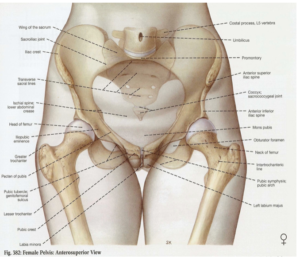
Labor pain is one of the most intense physical experiences a person can go through, but the good news is that there are numerous effective methods available to help manage discomfort during childbirth. From natural techniques to medical interventions, understanding your options can help you make informed decisions and feel more prepared for your birthing experience.
Natural Pain Management Techniques
Breathing and Relaxation Methods
Controlled breathing techniques form the foundation of many natural pain management approaches. Deep, rhythmic breathing helps maintain oxygen flow to both mother and baby while promoting relaxation. Progressive muscle relaxation, where you systematically tense and release different muscle groups, can help reduce overall tension and pain perception.
Movement and Positioning
Staying mobile during labor can significantly reduce pain intensity. Walking, swaying, rocking, or using a birthing ball allows gravity to help with the baby’s descent while providing distraction from contractions. Different positions like squatting, leaning forward, or being on hands and knees can also help relieve pressure on the back and pelvis.
Hydrotherapy
Hydrotherapy, or warm water immersion, whether in a birthing pool or shower, provides natural pain relief through buoyancy and heat. The warm water helps relax muscles, reduces pressure on joints, and can make contractions feel more manageable. Many birthing centers and hospitals now offer water birth options as part of their hydrotherapy services.
Massage and Touch
Gentle massage, particularly on the lower back, can help interrupt pain signals and promote relaxation. Counter-pressure applied to the lower back during contractions can be especially helpful for back labor. Light touch massage or effleurage on the abdomen can also provide comfort.
Visualization and Mental Techniques
Mental preparation through visualization, meditation, or hypnobirthing techniques can help manage pain by redirecting focus and promoting relaxation. These methods teach women to work with their bodies rather than fighting against the sensations of labor.
Medical Pain Management Options
Epidural Anesthesia
The epidural is the most common form of medical pain relief during labor. A local anesthetic is injected into the epidural space near the spinal cord, providing significant pain relief while allowing you to remain awake and alert. Modern epidurals can be adjusted to maintain some sensation and mobility while reducing pain.
Entonox (Nitrous Oxide and Oxygen)
Entonox is the correct medical name for the mixture of nitrous oxide and oxygen used for labor pain relief. It’s also commonly called “gas and air” or “laughing gas.” This self-administered option provides mild to moderate pain relief through a mask or mouthpiece that you control yourself. It’s fast-acting, doesn’t affect the baby, and allows for quick recovery between contractions. Many women appreciate having complete control over when and how much they use, typically starting about a minute before a contraction begins.
Opioid Medications
Medications like meperidine or morphine can be given through injection or IV to provide moderate pain relief. These are typically used earlier in labor as they can affect the baby’s breathing if given too close to delivery. They may cause drowsiness but don’t provide the complete pain relief of an epidural.
Local Anesthetics
Local numbing injections provide targeted pain relief for specific procedures like episiotomies or repair of tears. Common examples include:
- Lidocaine – Available in concentrations like 1% or 1.5% lidocaine for local numbing
- Bupivacaine – Used in concentrations such as 0.125% for epidurals or 0.5% for perineal blocks
- Ropivacaine – Typically used as 0.2% ropivacaine for epidural anesthesia
- Procaine (Novocain) – Used for local numbing procedures during delivery
- Chloroprocaine – Available as 2% chloroprocaine when rapid-acting relief is needed
These medications provide targeted pain relief without affecting the rest of the body or interfering with the natural labor process.
Complementary and Alternative Methods
Acupuncture and Acupressure
These traditional techniques involve stimulating specific points on the body to promote pain relief and relaxation. Some studies suggest acupuncture may help reduce labor pain and the need for other pain medications.
TENS Units
Transcutaneous Electrical Nerve Stimulation (TENS) uses mild electrical impulses to interrupt pain signals. Small electrodes are placed on the back, and the intensity can be controlled by the user. TENS units are non-invasive and don’t affect the baby.
Aromatherapy
Essential oils like lavender, peppermint, or eucalyptus may help promote relaxation and reduce pain perception when used safely during labor. Always check with your healthcare provider before using aromatherapy during pregnancy and birth.
Homeotherapy
Homeotherapy in relation to labour pain refers to the use of homeopathic remedies to manage and alleviate pain experienced during childbirth. Homeopathy is a holistic approach that aims to stimulate the body’s natural healing processes through highly diluted substances. In the context of labour pain, homeopathic treatments may be used to reduce anxiety, ease discomfort, and support the progression of labour.
Common homeopathic remedies used during labour include:
- Caulophyllum: Often used to promote effective contractions and ease cramps.
- Arnica: Helps reduce bruising and muscle soreness.
- Pulsatilla: Used for emotional support and to relieve irregular contractions.
- Belladonna: May be recommended for sudden, intense pain with heat and throbbing.
- Chamomilla: Helps manage irritability and pain sensitivity.
Factors to Consider When Choosing Pain Management
Your choice of pain management methods may depend on several factors including your birth plan preferences, the progression of your labor, any medical complications, and your personal pain tolerance. It’s important to remain flexible, as labor can be unpredictable and your needs may change.
Consider discussing these options with your healthcare provider during prenatal visits to understand what’s available at your birthing location. Some methods may not be available at all facilities, and timing can be crucial for certain interventions.
Creating Your Pain Management Plan
Rather than limiting yourself to one approach, consider developing a flexible pain management strategy that incorporates multiple techniques. You might start with natural methods and progress to medical interventions if needed, or combine different approaches throughout labor.
Remember that there’s no “right” way to manage labor pain, and using pain relief doesn’t make you less capable or strong. The goal is a safe, positive birthing experience for both you and your baby. Prepare yourself with knowledge about different options, but remain open to adapting your plan as needed during the actual experience.
Labor pain management is highly individual, and what works best for one person may not be ideal for another. By understanding your options and working with your healthcare team, you can make informed decisions that align with your values and help you have the most positive birth experience possible.
This information is provided for educational purposes only and is not a substitute for professional medical advice, diagnosis, or treatment. Always consult a qualified healthcare provider for advice regarding labour pain management and any medical concerns.





